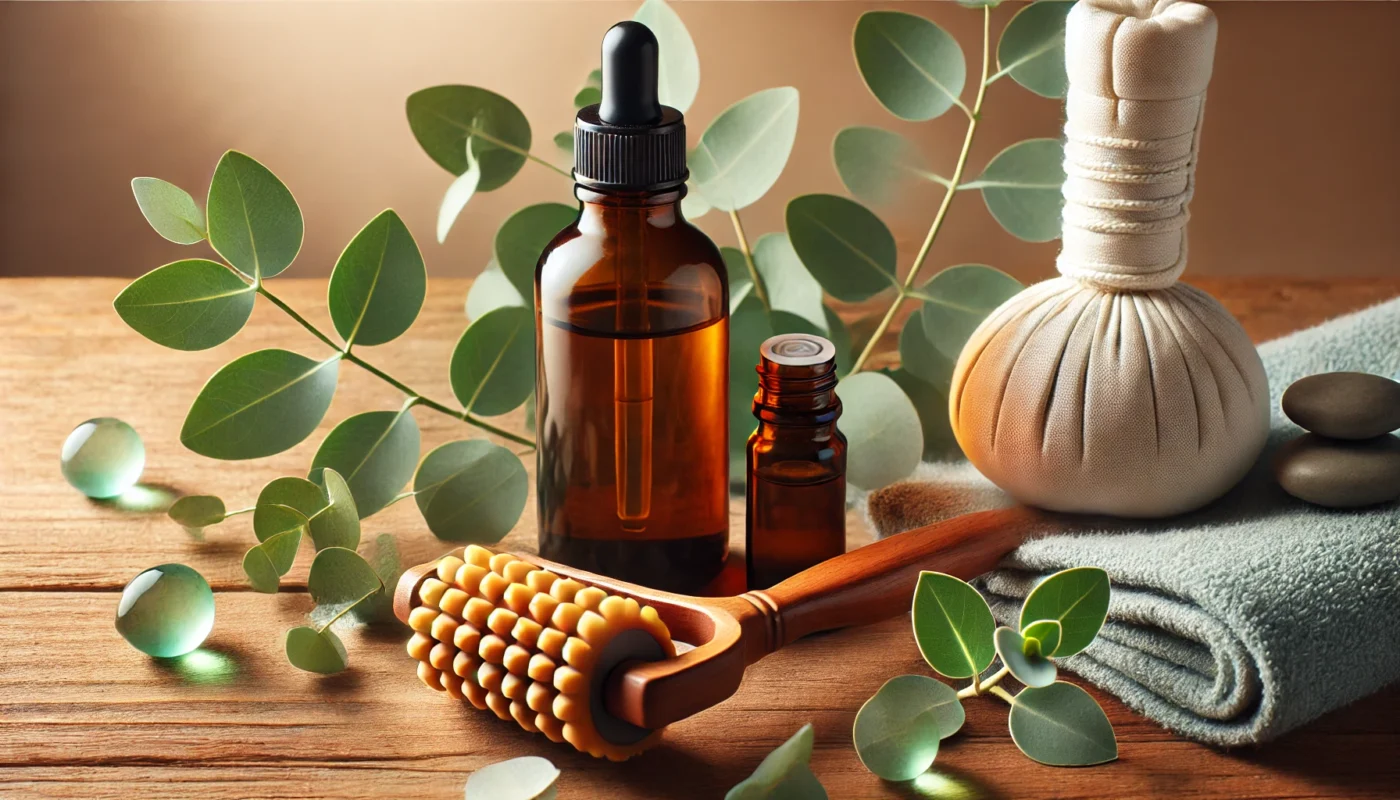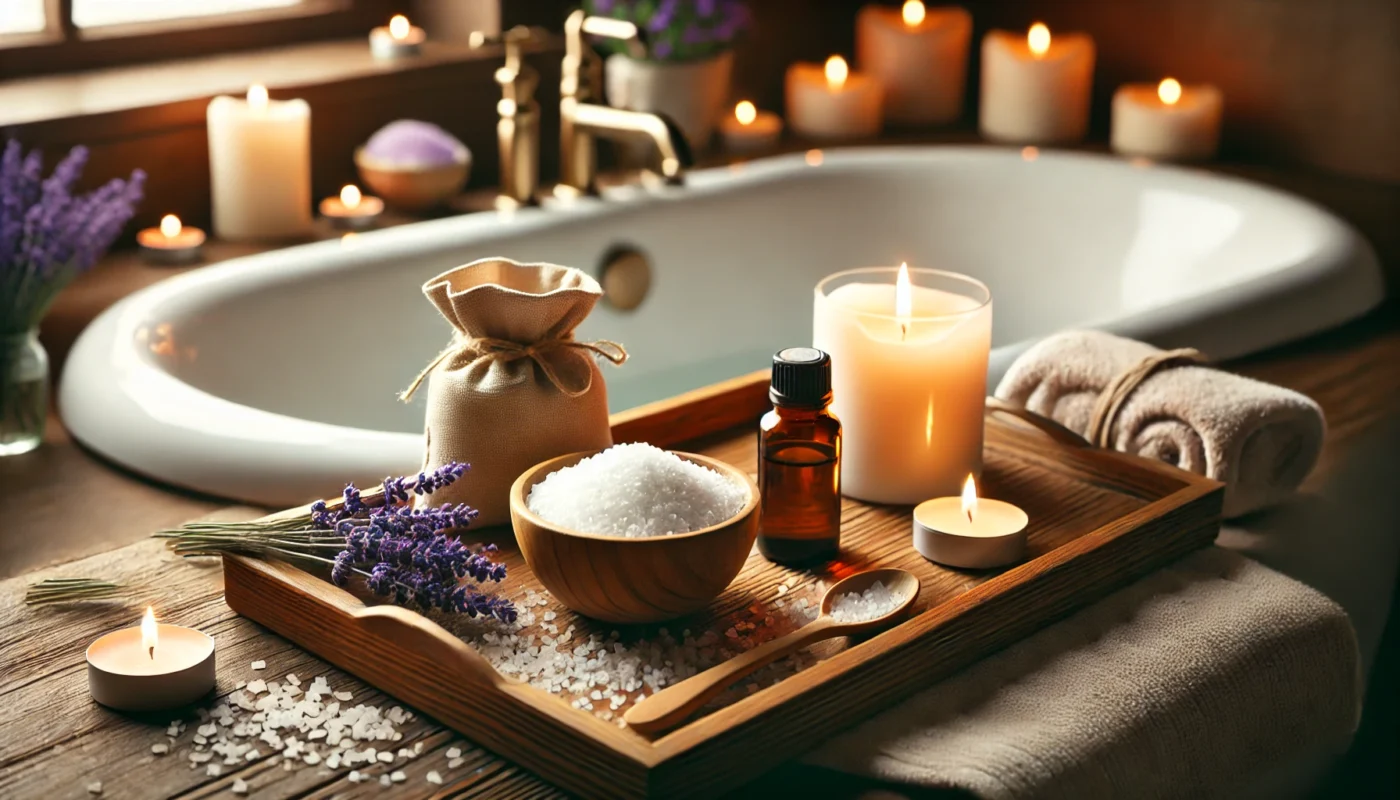Body aches and chills are common symptoms associated with viral infections such as the flu and the common cold. They can also result from physical exertion, stress, or underlying health conditions. Understanding the underlying causes can guide us in choosing the most effective remedies.
You May Also Like: Managing Pain Through Dietary Choices
Causes of Body Aches and Chills
Viral Infections
Viral infections like influenza and the common cold are prevalent culprits behind body aches and chills. These infections trigger the immune system to release inflammatory mediators, which can result in muscle inflammation and fever. This inflammation is a natural response as the body fights off the virus, but it can lead to significant discomfort.
Moreover, the body’s effort to combat the virus often results in chills as the hypothalamus raises the body’s temperature to create an inhospitable environment for the pathogens. This process can make you feel cold, even when you have a fever. Understanding this mechanism underscores the importance of remedies that support the immune system and reduce inflammation.
Physical Exertion
Physical exertion, especially when not accustomed to regular exercise, can lead to overworked muscles. This often results in soreness due to the accumulation of lactic acid and microscopic tears in muscle fibers. While exercise is beneficial, sudden or intense physical activity without proper warm-up or cool-down can cause discomfort.
In addition, repetitive movements or improper form during exercise can exacerbate muscle strain. It is crucial to integrate rest and recovery techniques, such as stretching and hydration, to alleviate these symptoms. Recognizing the signs of overexertion can prevent further muscle strain and promote recovery.
Stress
High levels of stress impact the body in various ways, including causing muscle tension and pain. Stress triggers the release of cortisol, which can lead to inflammation and exacerbate existing pain conditions. Additionally, stress often results in poor posture and tension, particularly in the neck, shoulders, and back.
Learning to manage stress through relaxation techniques is essential for preventing and alleviating body aches. Techniques such as deep breathing, progressive muscle relaxation, and mindfulness can help reduce stress levels and the associated physical symptoms. Addressing stress holistically can enhance overall well-being.
Chronic Conditions
Chronic conditions such as fibromyalgia or arthritis are characterized by persistent body pain. These conditions often involve widespread musculoskeletal pain, fatigue, and tenderness in localized areas. Understanding the nature of these chronic conditions is crucial for managing symptoms effectively.
For individuals with chronic pain, adopting a comprehensive approach that includes lifestyle modifications, natural remedies, and medical treatments is essential. Personalized treatment plans that address both the physical and psychological aspects of chronic pain can improve quality of life and reduce symptom severity.

Natural Remedies to Alleviate Aches and Chills
Exploring natural remedies can offer a gentle and holistic approach to managing body aches and chills. These remedies focus on relieving symptoms and supporting the body’s natural healing processes.
Herbal Teas and Infusions
Herbal teas are a soothing and effective remedy for alleviating body aches and chills. Ingredients like ginger, chamomile, and peppermint have anti-inflammatory and analgesic properties that help reduce pain and discomfort.
Ginger Tea
Ginger tea is renowned for its potent anti-inflammatory effects. It contains compounds such as gingerols and shogaols, which can help soothe sore muscles and reduce chills. Drinking ginger tea not only alleviates physical discomfort but also aids in digestion, which can be beneficial if you’re experiencing nausea.
To prepare ginger tea, slice fresh ginger and steep it in hot water for 10-15 minutes. Adding honey and lemon can enhance the flavor and provide additional health benefits. Consuming ginger tea regularly can be an effective way to manage body aches and support immune function.
Chamomile Tea
Chamomile tea is celebrated for its calming and soothing properties. The flavonoids in chamomile have been shown to relax muscle tension and reduce stress-related aches. This tea is particularly effective for individuals experiencing body aches due to stress or anxiety.
To make chamomile tea, steep dried chamomile flowers in boiling water for about 5 minutes. Drinking a cup before bedtime can promote relaxation and improve sleep quality, further aiding in the recovery process. Chamomile’s gentle nature makes it an excellent choice for people of all ages.
Peppermint Tea
Peppermint tea offers a refreshing way to alleviate muscle tension and aches. The menthol in peppermint acts as a natural muscle relaxant, providing relief from discomfort. Additionally, peppermint tea can help relieve headaches and improve digestion.
To prepare peppermint tea, steep fresh or dried peppermint leaves in hot water for 5-10 minutes. Enjoying this tea can also help clear nasal congestion, which often accompanies colds and viral infections. Its invigorating aroma and taste make it a popular choice for soothing body aches.
Essential Oils
Essential oils are concentrated plant extracts that can provide therapeutic benefits when used appropriately. Aromatherapy and topical application are two common methods for using essential oils to relieve body aches.
Lavender Oil
Lavender oil is known for its calming and relaxing effects. It can be particularly effective for reducing muscle tension and pain when applied topically. Dilute a few drops of lavender oil with a carrier oil, such as coconut or almond oil, and gently massage it into sore areas.
Inhaling lavender oil through aromatherapy can also help reduce stress and promote relaxation. Adding a few drops to a diffuser or a warm bath can create a tranquil environment conducive to healing. Lavender’s versatility makes it a valuable addition to any natural remedy toolkit.
Eucalyptus Oil
Eucalyptus oil boasts anti-inflammatory properties that can be beneficial for alleviating aches and pains. It can be used in a diffuser to purify the air and promote respiratory health, which is crucial during cold and flu season.
For topical application, mix eucalyptus oil with a carrier oil and massage it into affected areas. Adding eucalyptus oil to a warm bath can enhance its soothing effects, providing relief from body aches. Its invigorating aroma also helps clear nasal passages and improve breathing.
Peppermint Oil
Peppermint oil is famous for its cooling sensation, which can provide immediate relief from muscle pain. When applied topically, it creates a tingling effect that helps relax muscles and reduce discomfort.
To use peppermint oil, dilute it with a carrier oil and apply it to sore muscles. Its analgesic properties make it an excellent choice for tension headaches and muscle strains. Peppermint oil can also be used in a diffuser to invigorate the senses and lift your mood.
Epsom Salt Baths
A warm bath with Epsom salts can be incredibly soothing for aching muscles. The magnesium in Epsom salts is absorbed through the skin, helping to relax muscles and reduce inflammation.
Benefits of Epsom Salt Baths
Epsom salt baths offer numerous benefits beyond muscle relaxation. The magnesium helps improve circulation, ease tension, and promote detoxification. Regular Epsom salt baths can also support healthy skin and improve mood by reducing stress levels.
Additionally, soaking in an Epsom salt bath can help relieve joint pain and stiffness, making it an excellent remedy for individuals with arthritis. The warm water enhances the absorption of magnesium, providing optimal therapeutic effects.
How to Take an Epsom Salt Bath
- Fill your bathtub with warm water, ensuring it’s at a comfortable temperature.
- Add two cups of Epsom salts to the water and stir to dissolve.
- Soak for 15-20 minutes, allowing your muscles to relax and absorb the magnesium.
For added benefits, consider adding a few drops of essential oils, such as lavender or eucalyptus, to your bath. These oils can enhance the soothing effects of the bath and provide additional relaxation and relief.

Hydration and Nutrition
Staying hydrated and consuming a balanced diet can play a vital role in managing body aches and chills. Proper hydration helps flush toxins from the body, while nutrition provides the necessary nutrients for recovery.
Importance of Hydration
Hydration is crucial for maintaining optimal bodily functions, especially when experiencing body aches and chills. Water helps transport nutrients, remove waste, and regulate body temperature. Aim to drink at least eight glasses of water daily, and increase your intake if you’re experiencing fever or sweating.
Incorporating hydrating foods such as cucumbers, watermelon, and oranges can also support hydration. Herbal teas and broths are excellent options for staying hydrated while providing additional nutrients and soothing effects.
Balanced Diet for Recovery
A balanced diet rich in vitamins and minerals supports the body’s healing process and strengthens the immune system. Include a variety of fruits and vegetables, lean proteins, and whole grains in your meals to ensure you’re getting a diverse range of nutrients.
Foods high in antioxidants, such as berries and leafy greens, can help reduce inflammation and support recovery. Omega-3 fatty acids found in fish and flaxseeds have anti-inflammatory properties that can further alleviate body aches.
Foods to Avoid
Certain foods can exacerbate inflammation and should be limited during recovery. Processed foods, sugary snacks, and excessive caffeine can increase inflammation and stress the immune system. Opt for whole, unprocessed foods to support your body’s healing efforts.
Limiting alcohol and caffeine intake is also advisable, as they can dehydrate the body and interfere with sleep quality. Prioritizing nutrient-dense foods will provide the energy and support needed for recovery.
Rest and Relaxation
Rest is crucial for recovery. Allowing your body to rest and recuperate can significantly reduce the severity of body aches and chills.
Importance of Sleep
Quality sleep is essential for supporting the immune system and muscle recovery. Aim for 7-9 hours of sleep each night, and create a restful environment by minimizing noise and light. Establishing a regular sleep routine can enhance sleep quality and promote overall well-being.
Naps can also be beneficial during the day if you’re feeling particularly fatigued. Listen to your body and prioritize rest to aid in the healing process.
Mindfulness and Meditation
Practicing mindfulness or meditation can help reduce stress and muscle tension, promoting overall well-being. These practices encourage relaxation and focus, allowing the body to release tension and stress.
Incorporating deep breathing exercises or guided meditation into your daily routine can enhance relaxation and support recovery. Even a few minutes of mindfulness each day can make a significant difference in managing body aches and stress.
Gentle Physical Activity
While rest is important, gentle physical activity can also aid in recovery by promoting circulation and reducing stiffness. Activities like yoga, tai chi, or walking can help maintain flexibility and reduce muscle tension.
Listen to your body and avoid overexertion. Engaging in gentle movements can support recovery and improve mood, making it easier to manage body aches.
Integrating Natural Remedies with Conventional Treatments
While natural remedies can provide relief, they are most effective when integrated with conventional treatments. For instance, if you are experiencing severe symptoms, over-the-counter medications like acetaminophen or ibuprofen can be used alongside natural remedies for enhanced relief. Always consult with a healthcare professional before combining treatments, especially if you have underlying health conditions or are taking other medications.
Consultation with Healthcare Professionals
Before integrating natural remedies with conventional treatments, it’s essential to consult with healthcare professionals. They can provide guidance tailored to your individual health needs and ensure that the combination of treatments is safe and effective.
Discuss any underlying health conditions or medications you’re currently taking, as certain remedies may interact with prescription drugs. A healthcare professional can help you create a comprehensive plan that addresses your symptoms and promotes healing.
Monitoring Symptoms
Keep track of your symptoms and their progression when using natural remedies alongside conventional treatments. Monitoring your symptoms can help you determine the effectiveness of the remedies and identify any adverse reactions.
If symptoms persist or worsen, seek medical attention promptly. It’s important to address any concerns with a healthcare provider to ensure the appropriate course of action.
Tailoring Treatments to Individual Needs
Each individual’s response to natural remedies and conventional treatments may vary. Tailor your approach based on your specific symptoms, preferences, and lifestyle. Experiment with different remedies to find what works best for you.
Maintaining open communication with healthcare providers can help you make informed decisions and adjust your treatment plan as needed. A personalized approach can enhance the effectiveness of your treatment and support overall well-being.

Conclusion
Natural remedies offer a holistic approach to managing body aches and chills, emphasizing the importance of listening to your body and providing it with the care it needs. By incorporating herbal teas, essential oils, Epsom salt baths, proper hydration, and rest into your routine, you can alleviate discomfort and support your body’s natural healing processes. Remember, while these remedies can be beneficial, they are not a substitute for professional medical advice. Always consult with a healthcare provider for guidance tailored to your individual health needs.
Incorporating these strategies into your lifestyle can lead to improved well-being and resilience against common ailments. Embrace the power of natural remedies, and take proactive steps towards a healthier, more balanced life. Recognize the value of listening to your body’s signals and responding with care and intention. By doing so, you can enhance your quality of life and foster long-term health and vitality.
Promoting Long-term Health
Integrating natural remedies and healthy lifestyle choices can contribute to long-term health and well-being. Building a foundation of wellness practices such as balanced nutrition, regular physical activity, and stress management can prevent the onset of body aches and other ailments.
Educate yourself about the benefits and limitations of natural remedies, and stay informed about the latest research and developments. Empower yourself with knowledge to make informed decisions that support your health journey.
Encouraging Preventative Measures
Prevention is a key component of maintaining health and avoiding body aches and chills. Adopt preventative measures such as regular handwashing, staying active, and maintaining a healthy diet to bolster your immune system.
Stay proactive in addressing minor symptoms before they escalate. By taking a preventive approach, you can reduce the risk of experiencing severe body aches and chills, promoting overall health and well-being.
Fostering a Supportive Community
Share your experiences and knowledge of natural remedies with friends and family to create a supportive community. Encouraging others to explore holistic health options can foster a sense of connection and shared well-being.
Engage with online communities or local groups focused on holistic health to learn and share insights. Building a network of like-minded individuals can provide motivation and support on your journey to optimal health.
Further Reading:
Why Do I Have Body Aches and Chills but No Fever?
Why your whole body aches when you’re sick (and what you can do about it)
natural remedies, body aches, chills, recovery, sleep quality, mindfulness, meditation, gentle exercise, holistic health, nutrition, hydration, healthcare consultation, preventative measures, community support, stress management
Important Note: The information contained in this article is for general informational purposes only, and should not be construed as health or medical advice, nor is it intended to diagnose, prevent, treat, or cure any disease or health condition. Before embarking on any diet, fitness regimen, or program of nutritional supplementation, it is advisable to consult your healthcare professional in order to determine its safety and probable efficacy in terms of your individual state of health.
Regarding Nutritional Supplements Or Other Non-Prescription Health Products: If any nutritional supplements or other non-prescription health products are mentioned in the foregoing article, any claims or statements made about them have not been evaluated by the U.S. Food and Drug Administration, and such nutritional supplements or other health products are not intended to diagnose, treat, cure, or prevent any disease.

